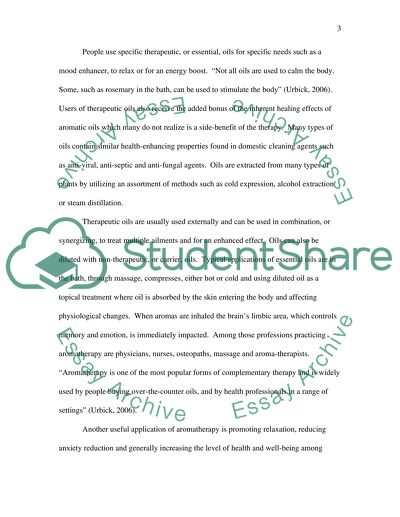Cite this document
(Aroma Therapy And Its History Essay Example | Topics and Well Written Essays - 1750 words, n.d.)
Aroma Therapy And Its History Essay Example | Topics and Well Written Essays - 1750 words. https://studentshare.org/health-sciences-medicine/1542016-aroma-therapy
Aroma Therapy And Its History Essay Example | Topics and Well Written Essays - 1750 words. https://studentshare.org/health-sciences-medicine/1542016-aroma-therapy
(Aroma Therapy And Its History Essay Example | Topics and Well Written Essays - 1750 Words)
Aroma Therapy And Its History Essay Example | Topics and Well Written Essays - 1750 Words. https://studentshare.org/health-sciences-medicine/1542016-aroma-therapy.
Aroma Therapy And Its History Essay Example | Topics and Well Written Essays - 1750 Words. https://studentshare.org/health-sciences-medicine/1542016-aroma-therapy.
“Aroma Therapy And Its History Essay Example | Topics and Well Written Essays - 1750 Words”. https://studentshare.org/health-sciences-medicine/1542016-aroma-therapy.


